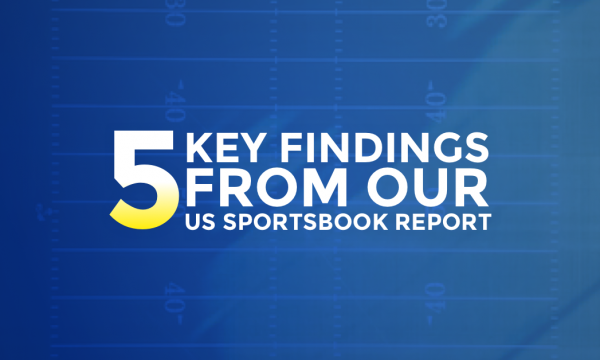
Customer inertia meant that current accounts were very much a safe bet for the major High Street banks.
The general trend in the financial services sector has been for consumers to rely on one trusted brand for most of their financial transactions, and this meant that the most basic of banking services, current accounts, were often used as a loss-leading product to engage a customer. That customer would go on to utilise much more profitable products over a typical customer lifespan – which stood at 17 years on average in 2013 according to the Payments Council. To put that figure into context, the average marriage lasts for just 11 years and six months.
This model largely survived even during the rise of the price comparison website. Whilst consumers became more willing to switch providers more frequently for other financial products, such as insurance or credit cards, they remained largely reluctant to switch their current accounts from one provider to another.
There are a number of reasons behind that trend, although amongst the biggest was the perceived hassle of switching, as well as a lack of any discernible difference between competing banks in this product area.
The introduction of CASS

That first point was addressed by the introduction of the Current Account Switching Service (CASS). Launched in September 2013, the service would see banks commit to completing an account switch within seven days, with all direct debits and standing orders transferred automatically. Old accounts would also redirect any payments to the new account for a period of 13 months, removing the need for consumers to contact the various companies that they held direct debits with.
In the twelve months following the introduction of CASS, account switching increased by 22%. In 2014, almost 260,000 customers switched from the ‘big four’ banks (Barclays, NatWest, Lloyds Bank and HSBC) to rival banks.
A more competitive market
The Financial Conduct Authority has noted a significant level of product development in the current account market since the introduction of CASS. Many of these developments are based around some form of cash incentive, such as ‘switching bonuses’. The FCA noted in March this year that 18% of accounts on the market offered some form of “golden hello” cash incentive.

First Direct: £100 switching bonus.

Cooperative Bank: £100 switching bonus plus a charitable donation.
Cashback schemes have also become popular, allowing customers to claim back a percentage of their spending on common household expenditures, including utility bills, grocery shopping and transport costs.

Santander: Cashback on various forms of spending, including utilities, mortgage payments and groceries, subject to a monthly fee.

NatWest: Cashback on utility bills, subject to a monthly fee.
This increasing diversity of products, and the more aggressive marketing of current accounts, has resulted in a number of changes to the search market.
Since the introduction of CASS in 2013, the keyword market for current accounts has consistently grown and unlike other sub-verticals, the search volume within current accounts is spread across a wider range of phrases. These include “best current account”, which accounts for 18.98% of the search market, “current account” (16.04%), “bank accounts” (14.71%), “basic bank account” (14.7%), “best bank account” (10.97%) and “best current accounts” (8.19%). This volume, which is spread more evenly, gives brands a much wider range of tactical choices when selecting keyword terms.
This has resulted in a much more competitive search market, and as we have seen in other product areas in the 2015 report, price comparison websites and advice websites have lost ground visibility to the traditional banking brands.
In 2014, price comparison and advice websites combined for 68% of the total aggregated click share in the current accounts market. This was made up of MoneySavingExpert (32%), MoneySupermarket (17%). Money.co.uk (16%) and This is Money (3%). The banks combined for less than one third (32%) of the search market.
Fast forward twelve months and the influence of the price comparison websites has fallen to just 44%, with MoneySavingExpert dropping from 32% of the aggregated click share to just 19%.
The banking brands now collectively account for 56% of the total aggregated click share. NatWest is the most visibly brand, with 10% of the aggregated click share although it should be noted that this is largely due to a strong paid search campaign, with the brand absent from the top ten brands in organic search.
Generally the split between the banking brands is minimal, indicating the increased strength in competition in this market. Just three percentage points separate the third and ninth most visible brands. What is telling is that most of the brands that are visible are ones that have launched targeted incentives for current account switching, either as a one-off bonus or some form of cashback. These are NatWest, Co-Operative Bank, Halifax, TSB and First Direct.
Does this represent a shift in consumer behaviour?

Whilst the search market has changed in the last twelve months, there are still signs that consumers in general are reluctant to switch.
FCA research has identified that for customers who have not switched, the “main barrier is inertia” and that many consumers “lack of a trigger to consider switching” (such as a dispute over charges, a local branch closure or a poor customer service experience).
The FCA also found a lack of awareness of CASS amongst the public, with only 41% of consumers aware of the service. This contradicted similar research by the Payments Council, which suggested 69% awareness amongst consumers.
It is likely that measures will be taken to address this lack of awareness of CASS, and the banking industry in general is promoting current accounts much more aggressively at present. That could see result in much stronger consumer interest in account switching over the course of 2016.






